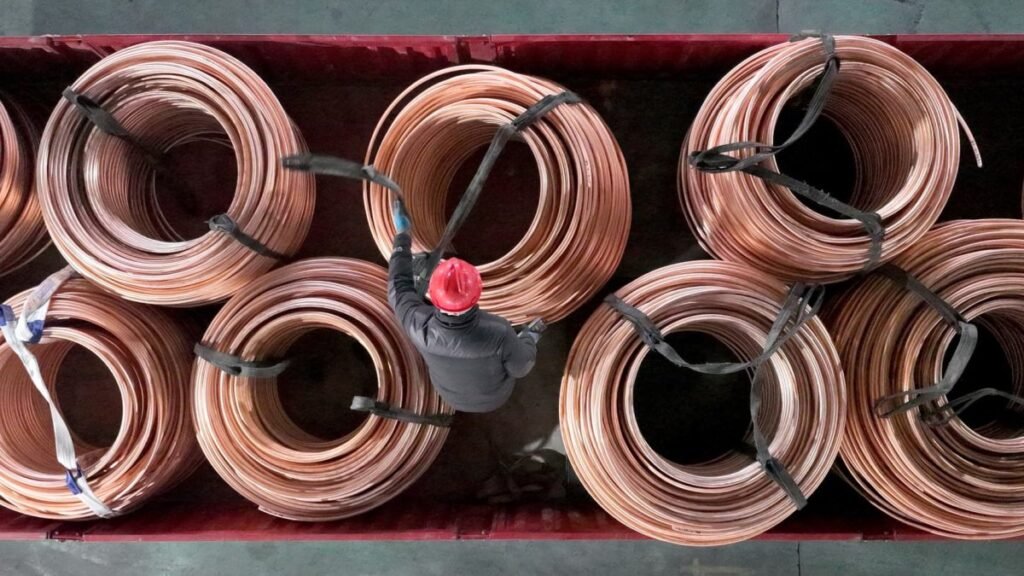- A shift by Western economies away from China’s copper supply chain could raise costs and delay the energy transition, says Wood Mackenzie.
- While supply chain risks can be mitigated in various countries, the scale of China’s dominance in the downstream supply chain means complete replacement is ‘unfeasible,’ said a mining expert.
Western countries seeking to diversify away from China’s dominance in copper could delay the energy transition besides raising costs, while its complete replacement would be ‘unfeasible,’ according to Wood Mackenzie.
China leads the world in key segments of the copper supply chain, with the critical metal serving as an important component in emerging technologies such as renewable energy, energy storage and electric vehicles.
As the U.S., Canada, Australia, and European countries seek to displace the country’s hold on copper through subsidies and investment, Wood Mackenzie warns that the dual aims of decarbonization and reduced dependence on Beijing are at odds with one another.
“Hundreds of billions of dollars in new copper processing and fabrication capacity would be required to replace China,” the natural resources’ data analytics firm said a report released on Thursday, adding that demand for the metal could grow by 75% to 56 million tons by 2050.
“This would create inefficiencies that would result in significantly higher-priced finished goods and increase the cost and timeliness of the energy transition,” it added.
Existing mines and projects under construction will meet only 80% of copper needs by 2030, according to the International Energy Agency, indicating a potential shortage of the metal.
According to Wood Mackenzie, most of the world’s initial mining of raw materials occurs primarily in the Americas and Africa, with China’s domestic mining output constituting just 8% of global production.
Though that share rises closer to 20% after accounting for China’s overseas mining assets, the country will still need to secure additional supplies to meet its needs. The rest of the world has enough primary mine supply to meet current requirements, the report said.
The copper supply chain, however, comprises several key phases, including mining, smelting and refining, fabricating, and the manufacturing of finished goods.
And what the rest of the world has in copper mines, it lacks in China’s dominance in downstream processing and manufacturing, according to the report.
“As governments and manufacturers aim to diversify away from China, it is crucial to consider the entire supply chain, not just mining operations,” said Nick Pickens, research director of global mining at Wood Mackenzie.
“While copper supply risks can be mitigated and some rebalancing has begun in various countries, the scale of China’s dominance in the supply chain means complete replacement is unfeasible.”

Molten copper flowing into molds at a smelting plant in Wuzhou, China.
The report outlines that 80% of copper mining produces copper concentrate, which must be processed at smelters and refineries to produce copper cathode. Fabricators then use that material to make copper components that wind up in finished goods.
Since 2000, China has been responsible for 75% of the world’s smelter capacity growth, according to Wood Mackenzie’s data.
“A scenario without China for the copper supply chain would require a substantial increase in processing capacity to meet energy transition targets,” said Pickens.
The report said that there are currently no plans for new primary smelting capacities in North America or Europe. Instead, the U.S. has focused on secondary markets and copper recycling, recently establishing its first secondary smelter for multi-metal recycling in the country.
China also accounts for around 80% of additions in copper and copper alloy fabrication capacity globally since 2019, with it now having half of the world’s fabrication capacity.
Legislations like the Inflation Reduction Act (IRA) in the U.S. have aimed to subsidize critical mineral investments. However, with copper, such efforts have met hurdles in the U.S. and Europe due to factors such as low utilization, high operating costs, and environmental regulations, the report said.
“Pragmatism and compromise will be essential to achieve net zero goals without imposing excessive costs on taxpayers. Easing global trade restrictions could be one necessary concession,” Pickens said.

